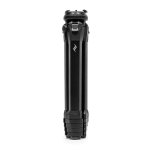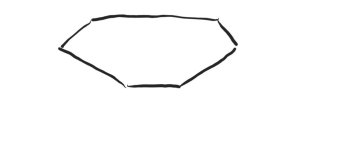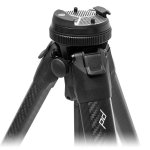Browncoat
Senior Member
Peak Design Travel Tripod
Specs
Misc Features
Bought an Induro tripod and Manfrotto 322RC2 head about 15 years ago. It's great for studio shots, but not something I want to lug around. It's difficult to find an unbiased review on this tripod because Peak Design handed out freebies to just about every photography "influencer" on the planet. Luckily a friend of mine had one and let me play with it for a few days before I decided to purchase one myself.
This review is for the aluminum version (about $350). The carbon fiber is $600. For about 1/2 lb in weight savings, it wasn't worth the added premium for me. Your mileage may vary.
What I like:
1) It's tiny. With a 15.5" folded height and the diameter of a soda can (pop for my fellow Midwesterners), this tripod is hard to beat. Most tripods are basically the same, but Peak Design has really done something innovative here with the way the head tucks into the legs to keep the profile small. I think this tripod strikes a good balance between weight and stability. It's light, but not so light that it feels like it's going to blow over when the wind kicks up.
2) Lever locks. Oh, how I have missed thee. My Induro tripod has twist locks and I hate them because it's difficult to tell if they are tight. That tripod has fallen over twice - both times due to a leg collapsing because it wasn't locked. This is personal preference and some people prefer twist locks. The main thing is, don't let anyone tell you that one style deploys faster than the other. That's hokum. When was the last time you were in a tripod leg deployment race anyway?
3) Arca-style plates. Manfrotto needs to jump on the bandwagon because their proprietary plates suck.
4) Head design is very ergonomic. Twist one ring to lock down the camera, twist another ring to rotate the ball head. No fussing around with knobs or making tension adjustments.
What I don't like:
1) The bubble level is on top of the head. I think most people would want the plate locking mechanism facing them - just seems intuitive, right? But if you mount the camera that way, you cover the bubble level. You have to mount the camera the other direction to see the level. Not a fan. It feels wonky. Maybe it's just me (it's not, others have complained about it too).
2) The plate screw requires a hex wrench. No d-ring or coin slot screw head, you need a tool. This is also a bonehead design choice. The supplied hex tool clips to one of the tripod legs, which is nice. But it will probably go missing eventually. I did have enough foresight to buy a second plate ($20) for my 70-200mm lens so I don't have to fart around with removing the plate from my camera when using that lens.
3) It's a little short. I'm 6'0 ft and still have to bend over to get in the viewfinder with this tripod fully extended. And that's with a large, gripped camera. I'm used to it because my other tripod wasn't tall enough either - but anyone over 6'0 would probably want to pass on this. That said, it's a travel tripod after all and you're making that sacrifice in favor of other conveniences.
4) No panning feature. Given the head design, it would've been easy to add side-to-side panning.
Summary:
Is it worth the asking price? I think it is. The only major flaw is the need for a hex tool for the mounting plate. They do come loose and to have to rely on a tool to tighten it back down is just dumb.
The main thing to remember is - it's a travel tripod. It's not for bird watchers who use 600mm lenses and a gimbal. But if you shoot landscapes, outdoor portraits, sports, etc...the Peak Design Travel Tripod is definitely worth a look.
And let's not forget the lifetime warranty. Hard to find these days. Peak Design's registration system is a bit of a pain in the ass, but hey...it's a lifetime warranty.

Specs
- Weight: 3.4 lb (Aluminum version)
- Load Capacity: 20 lb
- Max Height: 60"
- Min Height: 5.5"
- Folded Length: 15.5"
- Mounting Plate: Arca-type QR
- Mounting Screw: 1/4-20
- Head: Ball
- Legs: 5 section, Flip Lock
Misc Features
- Integrated cell phone mount
- Load hanging hook
- Inverted mode (center column flips)
- Padded, weatherproof case
- Lifetime warranty
Bought an Induro tripod and Manfrotto 322RC2 head about 15 years ago. It's great for studio shots, but not something I want to lug around. It's difficult to find an unbiased review on this tripod because Peak Design handed out freebies to just about every photography "influencer" on the planet. Luckily a friend of mine had one and let me play with it for a few days before I decided to purchase one myself.
This review is for the aluminum version (about $350). The carbon fiber is $600. For about 1/2 lb in weight savings, it wasn't worth the added premium for me. Your mileage may vary.
What I like:
1) It's tiny. With a 15.5" folded height and the diameter of a soda can (pop for my fellow Midwesterners), this tripod is hard to beat. Most tripods are basically the same, but Peak Design has really done something innovative here with the way the head tucks into the legs to keep the profile small. I think this tripod strikes a good balance between weight and stability. It's light, but not so light that it feels like it's going to blow over when the wind kicks up.
2) Lever locks. Oh, how I have missed thee. My Induro tripod has twist locks and I hate them because it's difficult to tell if they are tight. That tripod has fallen over twice - both times due to a leg collapsing because it wasn't locked. This is personal preference and some people prefer twist locks. The main thing is, don't let anyone tell you that one style deploys faster than the other. That's hokum. When was the last time you were in a tripod leg deployment race anyway?
3) Arca-style plates. Manfrotto needs to jump on the bandwagon because their proprietary plates suck.
4) Head design is very ergonomic. Twist one ring to lock down the camera, twist another ring to rotate the ball head. No fussing around with knobs or making tension adjustments.
What I don't like:
1) The bubble level is on top of the head. I think most people would want the plate locking mechanism facing them - just seems intuitive, right? But if you mount the camera that way, you cover the bubble level. You have to mount the camera the other direction to see the level. Not a fan. It feels wonky. Maybe it's just me (it's not, others have complained about it too).
2) The plate screw requires a hex wrench. No d-ring or coin slot screw head, you need a tool. This is also a bonehead design choice. The supplied hex tool clips to one of the tripod legs, which is nice. But it will probably go missing eventually. I did have enough foresight to buy a second plate ($20) for my 70-200mm lens so I don't have to fart around with removing the plate from my camera when using that lens.
3) It's a little short. I'm 6'0 ft and still have to bend over to get in the viewfinder with this tripod fully extended. And that's with a large, gripped camera. I'm used to it because my other tripod wasn't tall enough either - but anyone over 6'0 would probably want to pass on this. That said, it's a travel tripod after all and you're making that sacrifice in favor of other conveniences.
4) No panning feature. Given the head design, it would've been easy to add side-to-side panning.
Summary:
Is it worth the asking price? I think it is. The only major flaw is the need for a hex tool for the mounting plate. They do come loose and to have to rely on a tool to tighten it back down is just dumb.
The main thing to remember is - it's a travel tripod. It's not for bird watchers who use 600mm lenses and a gimbal. But if you shoot landscapes, outdoor portraits, sports, etc...the Peak Design Travel Tripod is definitely worth a look.
And let's not forget the lifetime warranty. Hard to find these days. Peak Design's registration system is a bit of a pain in the ass, but hey...it's a lifetime warranty.

Last edited:


